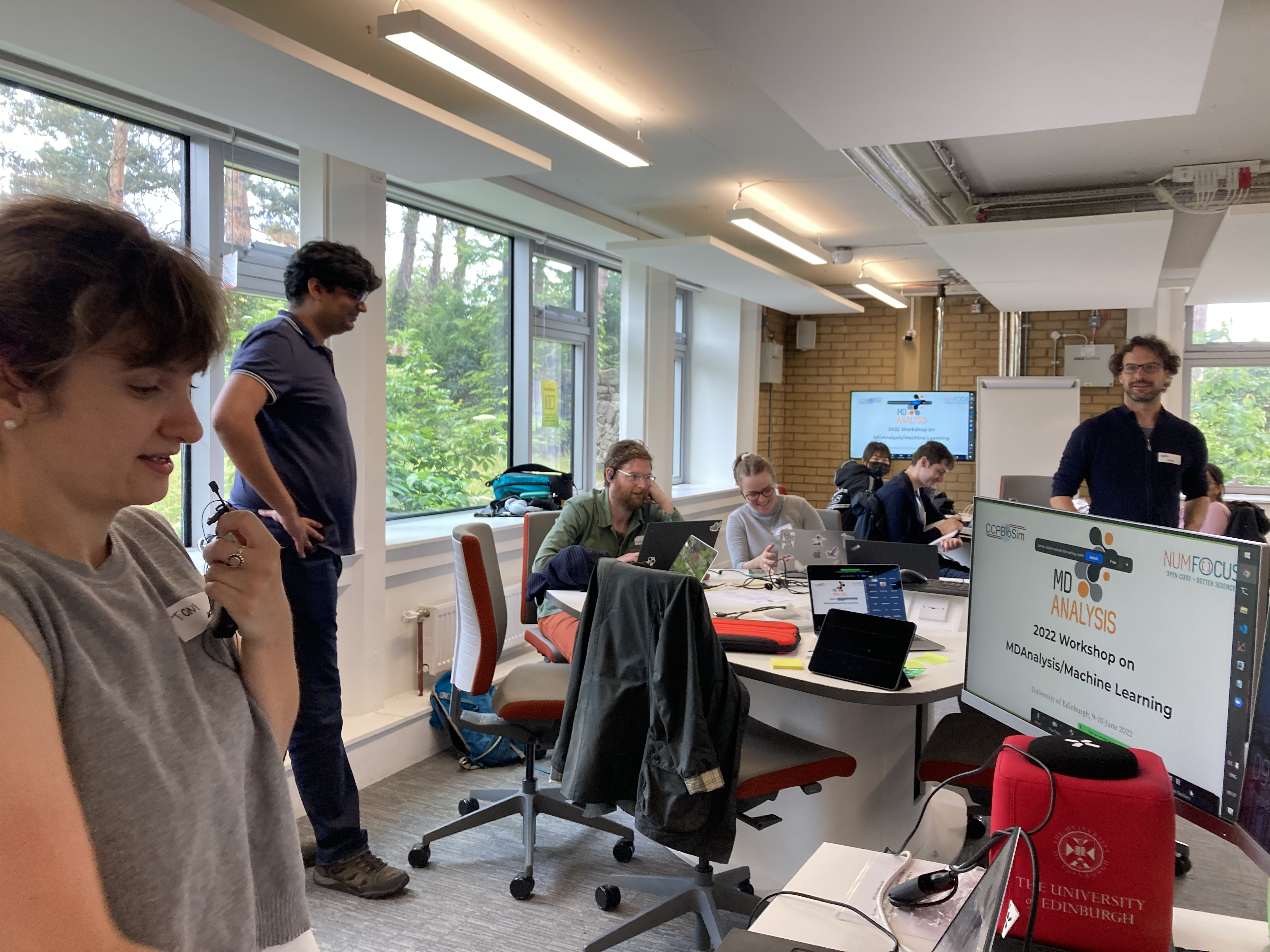MDAKits
24 Aug 2022As part of our CZI EOSS 4 grant we announced our plans to create an MDAKit ecosystem. With this post we aim to make our plans more concrete and solicit feedback from the community.
Beyond the outline provided here, the complete details of our plans can be found in our white paper named MDAKits: Supporting and promoting the development of community packages leveraging the MDAnalysis library [v0.1.0], available as a PDF at DOI 10.6084/m9.figshare.20520726.v1.
What is an MDAKit?
MDAKits are standalone packages containing code using MDAnalysis components that solves a specific scientific problems or in some form enhances the functionality of MDAnalysis core library. An MDAKit can be written by anyone and hosted anywhere.
A MDAKit can be registered in the MDAKits registry. In this case, it has to fulfill a number of additional requirements such as open-source licensed, hosted in a version control system, clear designation of authors/maintainers, documentation, and tests and continuous integration. Registered MDAKits will be listed publicly and thus be advertised to the whole MDAnalysis community. They will also be continuously tested against the latest released version and the current development version of the core MDAnalysis library so that users and developers have an up-to-date view of the code health of an MDAKit.
Why?
The open sharing of code that abides by the basic principles of FAIR (findability, accessibility, interoperability, and reusability) is essential to robust, reproducible, and transparent science. However, scientists typically are not supported in making the substantial effort required to make software FAIR-compliant, or incentivized with academic recognition or reward.
Our goal with MDAKits is to lower the barrier for researchers to produce FAIR software.
We support developers in creating new packages, guiding them through the process of achieving best practices and FAIR compliance. At the same time, we hope to make MDAnalysis useful to a broader community.
How to develop an MDAKit?
We are producing tools for creating MDAKits to help developers and we are working on infrastructure to publicize MDAKits. Our work on MDAKits is an ongoing process but you can now get started creating your own MDAKit:
MDAKit project template
Our first tool is the
cookiecutter-mdakit,
a cookiecutter template
that generates a skeleton project that implements our recommended
best practices. With cookiecutter
installed,
execute the following command inside the folder you want to create the
skeletal repository
cookiecutter gh:MDAnalysis/cookiecutter-mdakit
Follow the prompts or hit enter for the default options.
Then add your own code to the project. Add tests — you can extend the example tests in the template that show how to test MDAnalysis-based code. Commit and push your changes.
(The MDAKit cookiecutter is based off the Cookiecutter for Computational Molecular Sciences (CMS) Python Packages by Levi N. Naden and Jessica A. Nash from the Molecular Sciences Software Institute (MolSSI) and Daniel G. A. Smith of ENTOS. Thank you!)
Registering an MDAKit
If you want to register your MDAKit then create a pull request to
add a meta data entry metadata.yaml to MDAnalysis:
MDAKits/mdakits/{YOUR_MDAKIT_NAME}
(where you will also find a template to get you started). Your PR will
be reviewed for compliance with the requirements (for right now, see the white
paper for specifics). Once
registered, your MDAKit will be continuously tested.
Towards publication
The best practices that we encourage MDAKits to fulfill essentially amount to the majority of the contribution criteria for submissions to software-focused journals such as the Journal Open Source Software (JOSS). We encourage MDAKits to consider submission to such a journal once they meet the required levels of best practices. We are working towards streamlining the submission process for JOSS.
Give us feedback!
We are looking for feedback from the community: please let us know via our malinglist or discord or via the MDAKits issue tracker what your thoughts are:
- As a user: What do you like or dislike about the MDAKits approach? Would you want to use an MDAKit?
- As a developer: Would you be interested in creating an MDAKit? What should we do to make it easy for you?
Get in touch! MDAKits are new and we look forward to adapting the initial (v0.1.0!) approach based on what we hear from the community.
— @IAlibay @jbarnoud @orbeckst @richardjgowers @fiona-naughton @lilyminium
